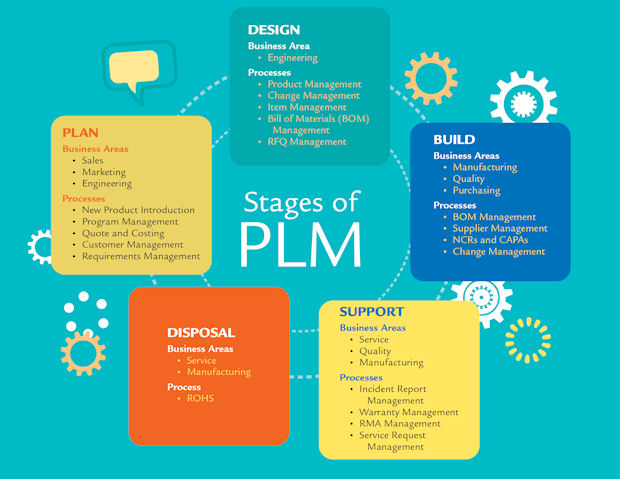Product Lifecycle Management: What Is PLM and How Can It Help My Company?
Latest News
September 1, 2014
 Dear Desktop Engineering Reader:
Dear Desktop Engineering Reader:
“Product Lifecycle Management: What Is PLM and How Can It Help My Company?” by Pete Markovic, a solutions consultant with IMAGINiT Technologies, is the kind of document that should be read by anybody running a small to medium-sized business (SMB) grappling with data control and processes that are never quite in synch with each other. The paper suggests that an affordable, tailorable solution such as Autodesk’s cloud-based PLM 360 service can help SMBs become more efficient and profitable. The hard value of the paper is that it provides a lot of straight-talk about PLM and SMBs, something that rarely gets much media airtime.
Markovic gets right down to brass tacks. You’re probably doing PLM already. This can mean things like a procedure for e-mailing spreadsheets around to the final approvers. Or maybe you have a PLM system and it’s not providing a lot benefit. This could mean a quality management system isolated from the rest of the company, or it can mean that expensive quasi-failure that made life more difficult.
Markovic also states a concept usually ignored: PLM is not load-and-go software. PLM embraces multiple applications. More importantly, he nails PLM by explaining that software is the media of PLM, while PLM is the strategy to manage processes and control data efficiently throughout the life of a given product or series of products.
He then tackles the biggest misconception about PLM: It’s just for large corporations. Not so, he says. The essential points Markovic focuses on here is that an SMB doesn’t need big iron to use a system such as Autodesk PLM 360 and gain all the benefits of PLM that you’ve read about. It is a fully secured cloud-based service, so it’s browser-accessible. It has pre-configurable applications to get you started quickly, yet it’s malleable so you can shape it to do what you need to do instead of twisting yourself in knots to accommodate it. And you can pick the capabilities you need, such as requirements or supplier management, and not pay for unnecessary functionalities.
The latter point Markovic expands on a bit. He explains that Autodesk PLM 360 can extend what works in your infrastructure already, say your PDM (product data management) or ERP (enterprise resource planning) systems, so you don’t have to ditch useful processes then convert and transfer their data.
Markovic looks at pricing, always a shocker with large-scale PLM implementations, and training. He also gets into what’s really involved in moving key processes to Autodesk PLM 360 through a case study about a company that went live with it recently.
The paper wraps with a discussion on how you can succeed in implementing a PLM system. This is somewhat of a to-do list of top-level business strategies to consider when implementing your first system or migrating to a new one. This is not a checklist per se, although it has that element. Rather, it is a series of important considerations and why they are important. For example, Markovic explains that you need to set attainable goals, and he warns about doing too much too soon. He emphasizes the importance of working with expert consultants who can help keep the project focused and build a realistic deployment plan.
“Product Lifecycle Management: What Is PLM and How Can It Help My Company?” is just eight pages long. It puts every inch of that space to good use. Markovic writes in a personable, easy to read fashion. You can envision having a cocktail with this guy. He avoids getting into heavy discussions of workflow topologies, cool commands and other important stuff more suitable for a different paper.
The goal here was to lay out a strong case that with a cloud-based PLM approach such as Autodesk PLM 360, SMBs can achieve the same benefits that large companies get from large-scale PLM implementations without the hassles of the past. Markovic succeeds at doing that. Hit today’s Check it Out link and download a complimentary copy and see for yourself.
Thanks, Pal. – Lockwood
Anthony J. Lockwood
Editor at Large, Desktop Engineering
Download “Product Lifecycle Management: What Is PLM and How Can It Help My Company?” here.
Subscribe to our FREE magazine, FREE email newsletters or both!
Latest News
About the Author
Anthony J. Lockwood is Digital Engineering’s founding editor. He is now retired. Contact him via [email protected].
Follow DE






